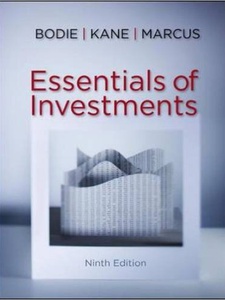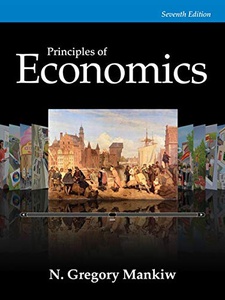Mẹo về The intensity of rivalry among existing firms is characterized to the following factors except one 2022
You đang tìm kiếm từ khóa The intensity of rivalry among existing firms is characterized to the following factors except one được Update vào lúc : 2022-10-22 12:40:24 . Với phương châm chia sẻ Bí quyết Hướng dẫn trong nội dung bài viết một cách Chi Tiết 2022. Nếu sau khi đọc nội dung bài viết vẫn ko hiểu thì hoàn toàn có thể lại phản hồi ở cuối bài để Admin lý giải và hướng dẫn lại nha.
Nội dung chính
- What is Competitive Intensity?
- Breaking Down Competitive Intensity
- What Determines the Level of Competitive Intensity?
- Benefits of Competitive Firms
- Key Takeaways
- Related Readings
- What are the intensity of rivalry among existing firms is characterized?
- What factors determine the intensity of rivalry in any industry?
- What are the types of rivalries in the market?
- What are the following forces competing within the industry?
Recommended textbook solutions

Principles of Economics
8th EditionN. Gregory Mankiw
1,335
solutions

Essentials of Investments
9th EditionAlan J. Marcus, Alex Kane, Zvi Bodie
689
solutions

Century 21 Accounting: General Journal
11th EditionClaudia Bienias Gilbertson, Debra Gentene, Mark W Lehman
1,009 solutions

Principles of Economics
7th EditionN. Gregory Mankiw
1,394
solutions
The extent to which rival companies exert pressure on one another
What is Competitive Intensity?
In strategy, competitive intensity is defined as the extent to which companies within a specific industry exert pressure on one another. Some level of competition is healthy because it acts as an impetus for innovation within
organizations. Competition, whether in an industry or another setting, drives teams and individuals to give their best. In fact, such rivalry is what keeps a majority of firms on their toes, propelling them to do better than their competitors.
Competitive intensity is one of the concepts covered in detail in Michael Porter’s
Five Forces framework.

Image: CFI’s
Business Strategy Course.
Since its inception in 1979, Porter’s Five Forces has been used as the de facto framework for analyzing industries. Other than competitive intensity, the other four forces that shape competition in a market are the threat of new
firms entering the market, suppliers gaining bargaining power, the bargaining power of buyers, and the threat of substitute products. But our focus today is on competitive intensity.
Breaking Down Competitive Intensity
According to
Porter’s framework, competition between firms has two facets, namely, the intensity and dimension. Competitive intensity determines a company’s profitability potential. So, with intense competition, a company will be able to transfer more value to its clientele.
A good illustration is the competition that exists between T-Mobile, AT&T, and Verizon. All three are
mobile phone companies that compete for the same group of consumers. They achieve this by lowering their prices and offering incentives to customers who decide to switch to their company.
The dimension of competition is a completely different aspect. This đơn hàng with the specific features or factors that firms are competing for. Organizations can compete in different areas – pricing, quality, customer tư vấn service, product features, and more.
The problem that companies face when
they compete in the same dimensions is that they encounter a zero-sum trò chơi. Put simply, this is a cyclic situation where one firm’s gain becomes another firm’s loss. To overcome this hurdle, companies will often venture into two or more market segments. For instance, auto manufacturers make luxury automobiles, targeting high-income earners, and economy cars, which are meant for middle- and low-income earners. CFI’s
Corporate Strategy Course covers these concepts in more detail.
What Determines the Level of Competitive Intensity?
According to Porter, there are several factors that influence competitive intensity between firms, which include the following:
1. Costs
Porter pointed out that there are specific costs that affect how intense the competition in an
industry gets. Costs that could increase rivalry include high fixed costs, high storage expenses, and low switching costs. High fixed costs will encourage firms to lower their prices. However, once the prices decrease, the competition will intensify.
2. Concentration in the Industry
If a particular industry has a very high number of firms offering identical goods or services, this will lead to more competitive intensity. However, in a monopoly or oligopoly market structure that is
dominated by just one or a few firms, there will be less rivalry. As such, the extent of concentration in an industry plays a huge role in competition intensity.
3. Rate of Market Growth
The rate which the overall industry is growing is another aspect that influences competitive intensity. For instance, if the market is growing rapidly, the rivalry between firms will be less intense.
A slow growth rate, however, increases competitive intensity. With slow growth, the
industry is very close to saturation – there aren’t many new customers to attract. But if the market is strong, there’s room for new entrants and new clients. There could even be untapped opportunities that firms can take advantage of.
4. Differentiation
The degree of differentiation also determines how intense the competition will be. With competing goods, such as food products and clothing, there’s very little room for differentiating the items offered by a particular company.
This means that companies will be competing for the same consumers, and this increases rivalry. However, if a firm is offering highly differentiated products that other organizations cannot easily imitate or copy, then it will face relatively less competition.
5. Switching Costs
Apart from fixed costs, switching costs also influence the extent of rivalry between companies. If an organization decides to go for a different supplier from the one it has been using, it will incur
switching costs. High switching costs lead to a decrease in competition. The switching costs arise from the fact that customers have invested a lot of their resources in learning how to use a particular product.
However, if there aren’t any switching costs involved, then industry competition will be pretty intense. Markets that giảm giá with common consumer goods are often the ones that have low switching costs.
Learn more in CFI’s
Business Strategy Course.

Benefits of Competitive Firms
An industry where companies remain highly competitive offers several benefits, such as low prices on commodities, incentives to reduce production costs,
and the introduction of different technologies and incentives. These benefits can be classified into three main categories:
1. Innovation
In a bid to outdo their competitors, firms will always try to be innovative. Innovation can help a company differentiate itself and attract new customers. More customers translate into higher revenues and profits. Companies that try to be innovative also benefit customers. If several companies try to differentiate their products, then consumers
will have a variety of unique products to choose from.
What’s more, consumers are always willing to pay higher prices if they feel that they are getting value for their money. So, in a world where so many products seem identical, a little bit of creativity can help a firm to go a long way.
2. Decrease in Prices
If a consumer knows that they won’t incur any expense when switching to a different product, they will be more willing to try out a range of products. To prevent this,
many firms cut down on their prices so they don’t end up losing clients. Along with lower pricing, firm owners try to gain a better understanding of unmet consumer needs. This way, they can work toward developing products and services that meet these needs.
3. Economic Growth
Competition also fosters economic growth. With rivalry comes innovative technologies, which boost economic growth. A good example would be advancements in the smartphone industry, which has facilitated the
growth of world economies.
Key Takeaways
Porter’s competitive intensity determines the level of rivalry existing in a particular industry. This competition can be influenced by several factors, including the concentration of the industry, cost of switching, fixed costs, and the rate of industrial growth. Luckily, there are several actions that firms can undertake to ensure they stay ahead of their competitors. These include differentiating their products, reinventing themselves
constantly, and identifying untapped opportunities.
Learn more in CFI’s Business Strategy Course.
Related Readings
Thank you for reading CFI’s guide to competitive intensity. To keep learning and advancing your career, the following CFI resources will be helpful:
- Bargaining Power of Suppliers
- Industry Analysis
- Natural Monopoly
- Porter’s Five Forces Model
What are the intensity of rivalry among existing firms is characterized?
The intensity of rivalry among competitors in an industry refers to the extent to which firms within an industry put pressure on one another and limit each other’s profit potential. If rivalry is fierce, then competitors are trying to steal profit and market share from one another.
What factors determine the intensity of rivalry in any industry?
A number of structural factors can affect industry rivalry:. Numerous or equally balanced competitors. … . Slow industry growth. … . High fixed or storage costs. … . Lack of differentiation or switching costs. … . Capacity increased in large increments. … . Diverse competitors. … . High strategic stakes. … . High exit barriers..
What are the types of rivalries in the market?
Just three forms of rivalry capture the dynamics of these processes: developing potential customers, capturing rivals’ customers and competing for sales to shared customers. Each of these applies not only to customers, but also to other assets that must be won against rivals.
What are the following forces competing within the industry?
The Five Forces. Threat of New Entrants. The threat of new entrants into an industry can force current players to keep prices down and spend more to retain customers. … . Bargaining Power of Suppliers. … . Bargaining Power of Buyers. … . Threat of Substitute Products. … . Rivalry Among Existing Competitors..
Tải thêm tài liệu liên quan đến nội dung bài viết The intensity of rivalry among existing firms is characterized to the following factors except one




Chia Sẻ Link Down The intensity of rivalry among existing firms is characterized to the following factors except one miễn phí
Bạn vừa tìm hiểu thêm tài liệu Với Một số hướng dẫn một cách rõ ràng hơn về Clip The intensity of rivalry among existing firms is characterized to the following factors except one tiên tiến và phát triển nhất và Chia Sẻ Link Cập nhật The intensity of rivalry among existing firms is characterized to the following factors except one Free.

Hỏi đáp vướng mắc về The intensity of rivalry among existing firms is characterized to the following factors except one
Nếu sau khi đọc nội dung bài viết The intensity of rivalry among existing firms is characterized to the following factors except one vẫn chưa hiểu thì hoàn toàn có thể lại phản hồi ở cuối bài để Admin lý giải và hướng dẫn lại nha
#intensity #rivalry #among #existing #firms #characterized #factors